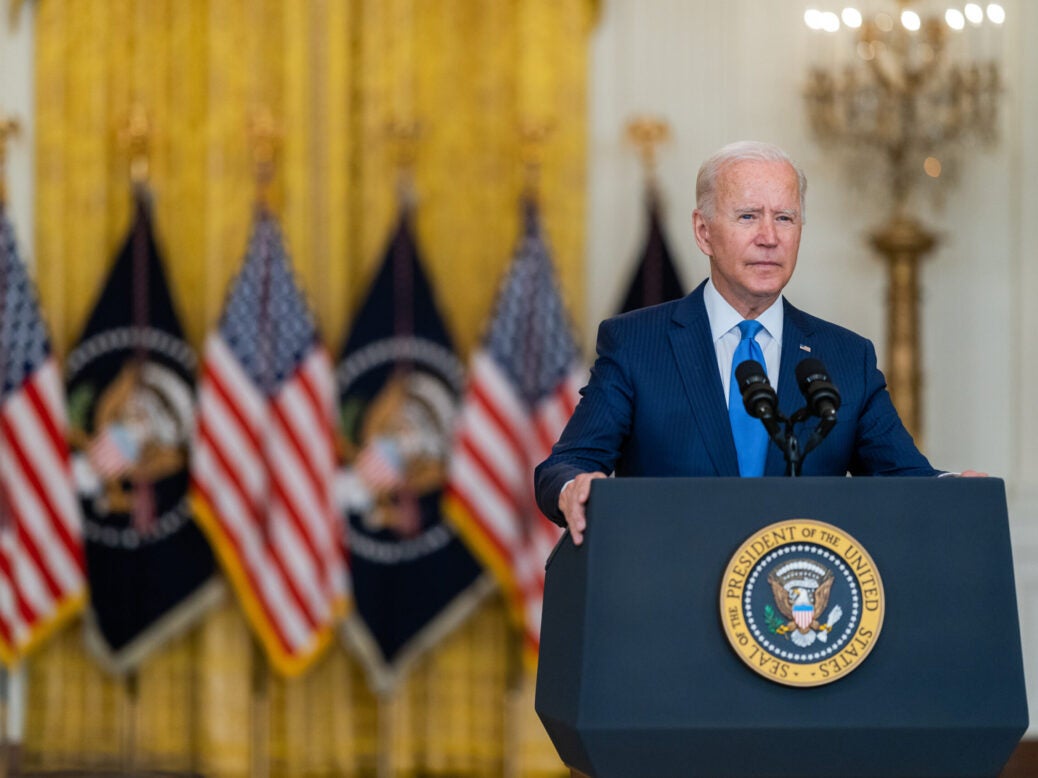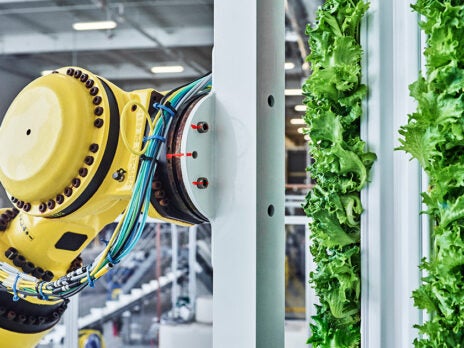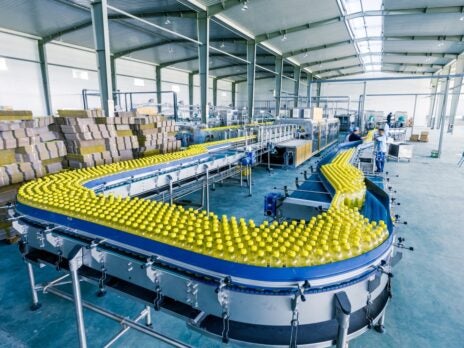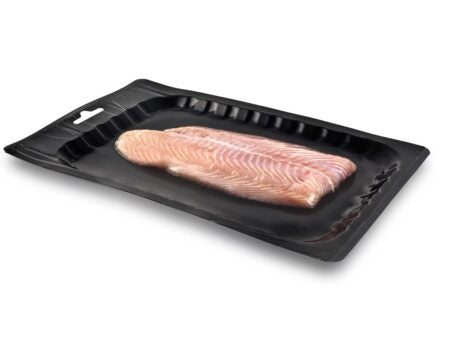
America meat business is just too concentrated, is hurting farmers and customers and is a notable think about emerging meals costs within the nation.
That’s how President Biden perspectives the field and america govt has set out plans for “a extra aggressive, honest, resilient meat and poultry sector, with higher income for manufacturers and extra alternatives and inexpensive costs for customers”.
However Biden’s fighters indicate that the focus of possession is not anything new and that there are a variety of things at the back of meals payment inflation.
So who is correct?
Julie Anna Potts, the president and CEO of the business frame The North American Meat Institute (NAMI), is company in her trust that what we’re seeing is a results of marketplace prerequisites.
“Farm animals manufacturers’ struggles and better pork costs for customers don’t seem to be because of the construction of the meat business which hasn’t modified in just about 30 years,” she tells Simply Meals. “Economist after economist has made up our minds that labour shortages, lowered delivery, and report call for are inflicting inflation, which isn’t distinctive to meat and poultry manufacturing.”
However the problem displays no signal of going away.
A Area Anti-Believe Committee listening to, entitled Addressing the Results of Financial Focus on Americas Meals Provide, hung on 19 January heard from involved events and witnesses on all sides of the argument and a compelling case used to be made by means of each proponents and fighters of Biden’s stance.
The Biden management suggests a small team of dominant meatpackers is abusing its marketplace energy. In reaction, it’s to spend US$1bn on grants and loans for brand new impartial processing vegetation. It is usually making plans to introduce new labelling laws and tactics for farmers to file anticompetitive practices in an try to give a boost to the way in which the provision chain operates and to make it extra clear.
It’s true to mention the processing of meat in america is ruled by means of a couple of huge corporations. Some 80-85% of pork processing in america is within the arms of 4 corporations –Cargill, JBS, Tyson Meals and Marfrig International Meals. The dominant ‘giant 4’ poultry corporations – JBS, Tyson, Perdue and Sanderson Farms – hang an estimated 54% of the marketplace.
There are issues the makeup of each sectors creates prerequisites through which costs are levied to the good thing about the processors and to the detriment of providers and customers.
The case of the meatpackers has no longer been aided by means of the truth that, over the past 12 months or so, there were various price-fixing allegations made in opposition to meat corporations by means of farmers, consumers, customers and govt businesses, a few of that have been settled out of court docket, most often in circumstances related to poultry and beef processing.
Biden’s management could also be unsatisfied various meatpacking companies have reported hovering income and made bumper payouts to executives concurrently customers have had to deal with emerging costs.
Tyson, the biggest meatpacker in america, and Kansas-based Seaboard Meals, along side Brazil-headquartered JBS and Marfrig, had been criticised over income in a White Area file co-authored by means of Brian Deese, the director of the Nationwide Financial Council, which used to be revealed in December.
This adopted a identical file in September when Biden and Vice President Kamala Harris claimed part of the larger meals costs to the shopper had been coming from pork, beef and poultry.
In September, Tyson hit again, pronouncing the corporate “categorically rejects the conclusions drawn”. On the time, Tyson stated in a commentary: “It’s erroneous to signify that consolidation within the meat-processing business is main to raised costs for customers.”
Our bodies representing the beef business have, possibly unsurprisingly, refuted complaint of the field and recommendations reform is important. Mike Brown, president of the Nationwide Rooster Council, stated firstly of this month Biden’s plans to shake-up america meat business “seem like an answer searching for an issue”.
Alternatively, various participants to closing week’s Area anti-trust listening to agreed with committee chairman Consultant David Cicilline’s description of “unchecked consolidation” within the meat business that has “destroyed range”, in addition to his trust there may be “common proof of company profiteering”.
Allison Johnson, a sustainable meals coverage suggest on the Nationwide Assets Protection Council, argued america “meals device is in disaster” and prompt “a couple of meals corporations are profiteering wildly at everybody else’s expense”.
However fighters of Biden’s projects had been additionally in proof. Peter St Onge, a researcher in economics on the free-enterprise suppose tank the Heritage Basis, claimed “the management is scapegoating [the meat industry] for its personal errors”.
He added: “The meals business has been concentrated for many years and all over that length meals have been exceptionally reasonable.”
The affect of Covid-19
This level appears to be on the middle of the controversy. The beef business has no longer just lately transform concentrated so why has the Biden management became its gaze on its construction and practices?
Covid-19 would appear to be a part of the solution. All over the peak of the pandemic, some huge meat vegetation had been close down quickly because of outbreaks amongst their workers, resulting in fears of meals shortages within the retail outlets.
Larger call for for meat from other people caught at domestic uncovered a scarcity of slaughterhouse capability whilst plant shutdowns and virus-linked labour shortages additional lower the choice of cows the factories may procedure.
Nervous about meals safety, america management became its focal point onto the beef delivery chain and didn’t like what it discovered relating to focus of possession, which it has related to emerging costs.
Alternatively, Joseph Glauber, a senior analysis fellow, markets, business and establishments department, on the Global Meals Coverage Analysis Institute (IFPRI) in Washington, issues to a extra sophisticated situation.
He tells Simply Meals: “The management is coping with excessive inflation charges and pork costs are these days working about 20% over year-ago ranges. Top retail costs for pork are coming at a time when farm animals costs have no longer risen a lot – and in some circumstances have fallen – and feature led to a widening farm-to-retail payment unfold and powerful packer/processing margins.
“A number of elements have led to the present scenario within the business. The plant shutdowns in early 2020 because of Covid outbreaks led to a pointy building up in retail costs as a result of the dearth in processed meat merchandise and a pointy drop in manufacturer costs as a result of the glut of farm animals available on the market that couldn’t be slaughtered.
“Whilst the placement stepped forward in the second one part of 2020, labour shortages and Covid problems that experience slowed line speeds proceed to be an issue. And the wholesale-to-retail unfold has larger as neatly as a result of delivery chain problems like transportation prices, power prices, and labour problems.”
Some agri-economists in america have additionally prompt the management will have were given it incorrect and argue emerging costs mirror a surge in call for, pandemic-constrained provides and emerging prices for labour and delivery.
Professor Derrell Peel from Oklahoma State College issues to market-driven consolidation that left the business without a spare capability to deal with the Covid-19 call for surge.
He says: “It’s value reminding folks that the construction of the meat business hasn’t modified for roughly 30 years. “Two issues have introduced this [the Biden administration’s focus on the sector] to a head. A part of it’s related to the disruption we’ve got noticed with the pandemic. There has additionally been a strategy of downsizing [amongst processors].
“However the pork business in america may be very cyclical and there was a variety in farm animals numbers once more within the closing six years whilst capability has declined. This has essentially modified the supply-demand factor and truly driven the bounds. Manufacturers had been hollering about packers for 100 years on this nation and that has reached a top in the previous couple of years.”
Professor Glynn Tonsor from the dept of agricultural economics at Kansas State College echoes Peel’s feedback.
“Whilst 80-85% of pork processing in america is within the arms of 4 corporations that has been true for the closing two decades,” he says. “You will need to no longer transform deceptive by means of linking fresh pricing patterns to focus only. It’s deceptive to make that bounce.”
Glauber on the IFPRI says: “Covid has led to an excessively huge shift in meals call for clear of eating places to at-home intake. America is seeing report meat exports as neatly, with huge gross sales to China and different markets. All of this has stored pork and different meat costs excessive on the retail degree.
“Crops had been working close to capability with day-to-day farm animals and beef slaughter working close to 2019 ranges. All of this has contributed to very excessive margins.
“For my part, the query boils right down to if income are so excessive, why hasn’t the business expanded to create extra capability, which would scale back shopper costs and lift costs on the manufacturer degree? Is that this because of collusion? My solution could be there could also be collusion however I haven’t any proof of it.”
Peel at Oklahoma State College suggests pork manufacturers had been unfairly lumped in with different meat processors on this regard.
“[Market manipulation] has had a minimum affect within the pork business,” he says. “It’s extra in regards to the poultry and beef industries. The ones industries are actually vertically built-in. Not one of the pork teams personal their very own cows so they may be able to’t keep an eye on the marketplace. It’s simple to be lumped in in combination by means of the informal observer.”
If such collusion does exist – and the high-profile price-fixing settlements counsel it has performed previously within the poultry sector – would the Biden management’s $1bn funding inspire new gamers to go into the marketplace to get a divorce any over-cosy relationships?
Peel isn’t so positive. “It [$1bn] truly isn’t so much. The extent of funding had to get to a degree could be very giant,” he says. “A small- to medium-sized packing plant most likely wouldn’t paintings. The rationale we’ve got the business we’ve got now could be that the small plant homeowners we had previously exited the business. A distinct segment or focused [offering] may paintings as a sub-sector however doesn’t trade the wider business in any respect.”
Kansas State’s Tonsor consents. “One billion bucks is each a large and a small quantity. In comparison to the scale of the business it’s slightly small,” he says. “It would result in a marginal growth of a few small companies however it doesn’t transfer the needle in mixture. And the only objective [of niche players] isn’t to be a less expensive manufacturer, in order that isn’t converting costs for the shopper.”
Glauber on the IFPRI provides: “My fear is that you’ll have a scenario analagous to the micro-brewery marketplace over the last two decades, the place you first of all noticed a proliferation of small craft beer manufacturers within the overdue Eighties and Nineties handiest to look maximum of them devoured up by means of Anaheuser Busch-InBev, Molson Coors, and many others inside a couple of years.”
What may occur subsequent?
Something already taking place is Cargill’s proposed takeover of peer Sanderson Farms, at the side of investor Continental Grain, is being tested by means of america govt over issues about what it would imply for pageant within the sector. Given america management’s rhetoric, it might be unexpected if the $4.5bn deal, agreed in August, had been allowed to move forward.
However is additional motion at an business degree above and past what has been introduced thus far most likely?
Peel at Oklahoma State says: “I don’t suppose it’s most likely that the Biden management will do anything else as drastic as breaking apart the present business construction. No matter they are saying publicly, it isn’t essentially what they’re going to do on the finish of the day. Farm animals numbers are falling, so capability restraints shall be much less of an issue over the following couple of years. A few of these problems will die down.”
Previous this month, a spokesperson for NAMI additionally prompt issues are calming down. “The marketplace has already begun to steadiness itself,” it advised Simply Meals, including “packers have begun to transparent the backlog of farm animals created by means of the pandemic”.
However there’s a common trust there must be vital funding in infrastructure transferring ahead.
Glauber on the IFPRI says: “A large number of uncertainty available in the market could also be an element this is fighting corporations from increasing.
“On the finish of the day, I’m sceptical that including capability can have a lot affect on what the management says it need to cope with – inflation. As farm animals numbers decline, we will have to see stepped forward manufacturer costs. Futures costs would point out that we’re seeing some rebound now. Packer margins will decline. It is a commonplace trend by means of the way in which.”
Peel at Oklahoma State thinks one of the most giant meatpackers would be the one to put money into further funding and infrastructure.
“However they’re going to wait till there may be enough farm animals and marketplace call for to justify their funding.”





